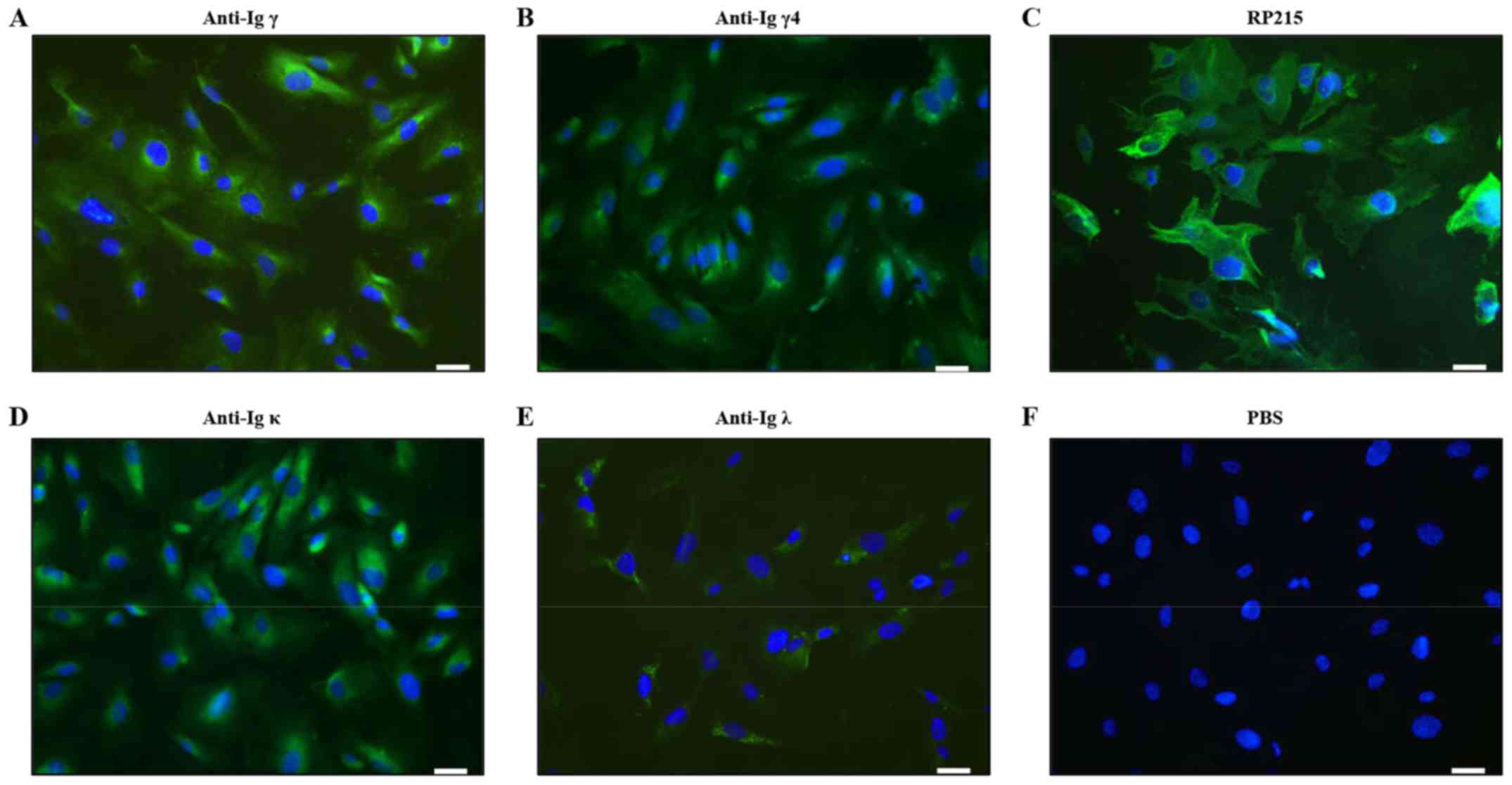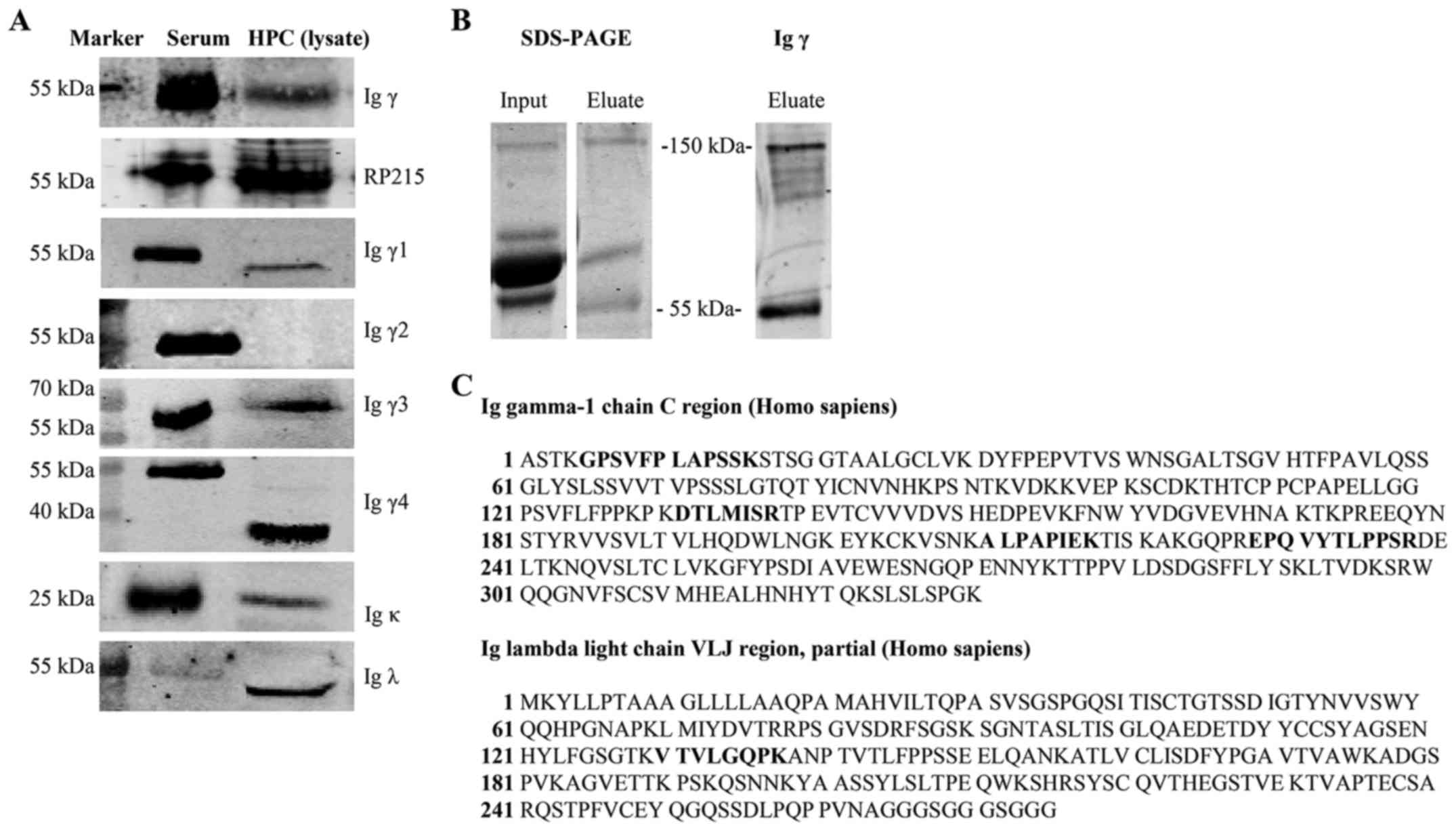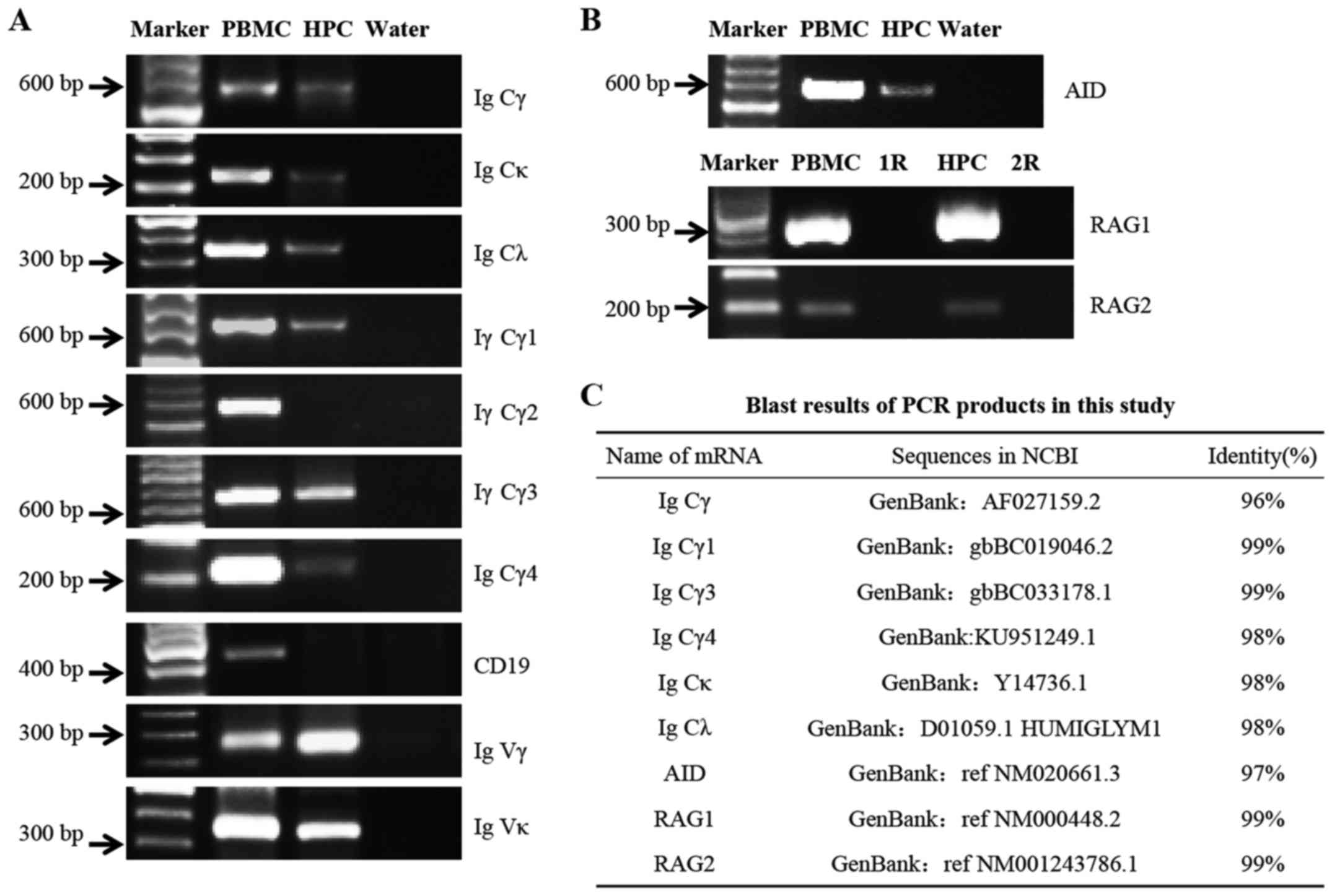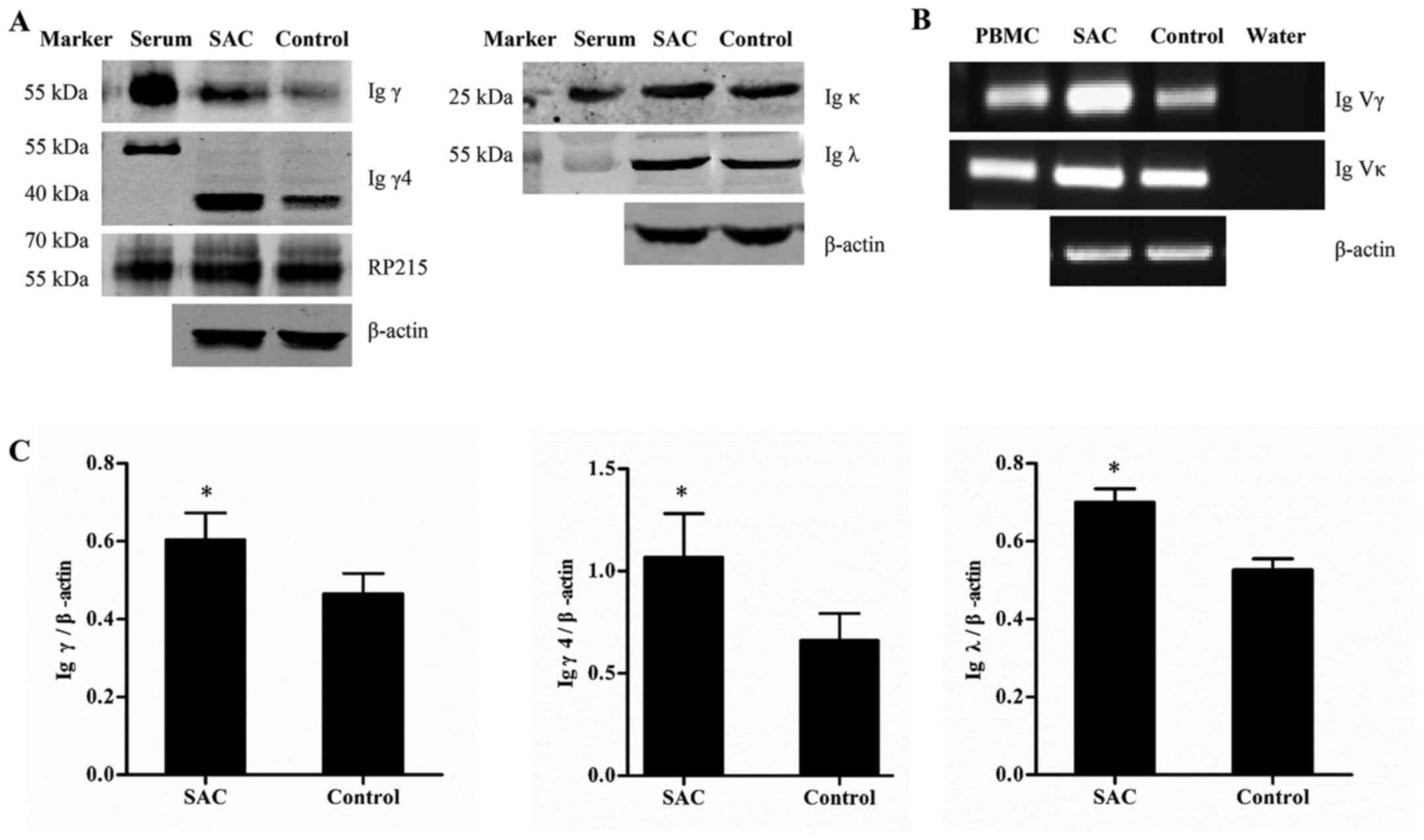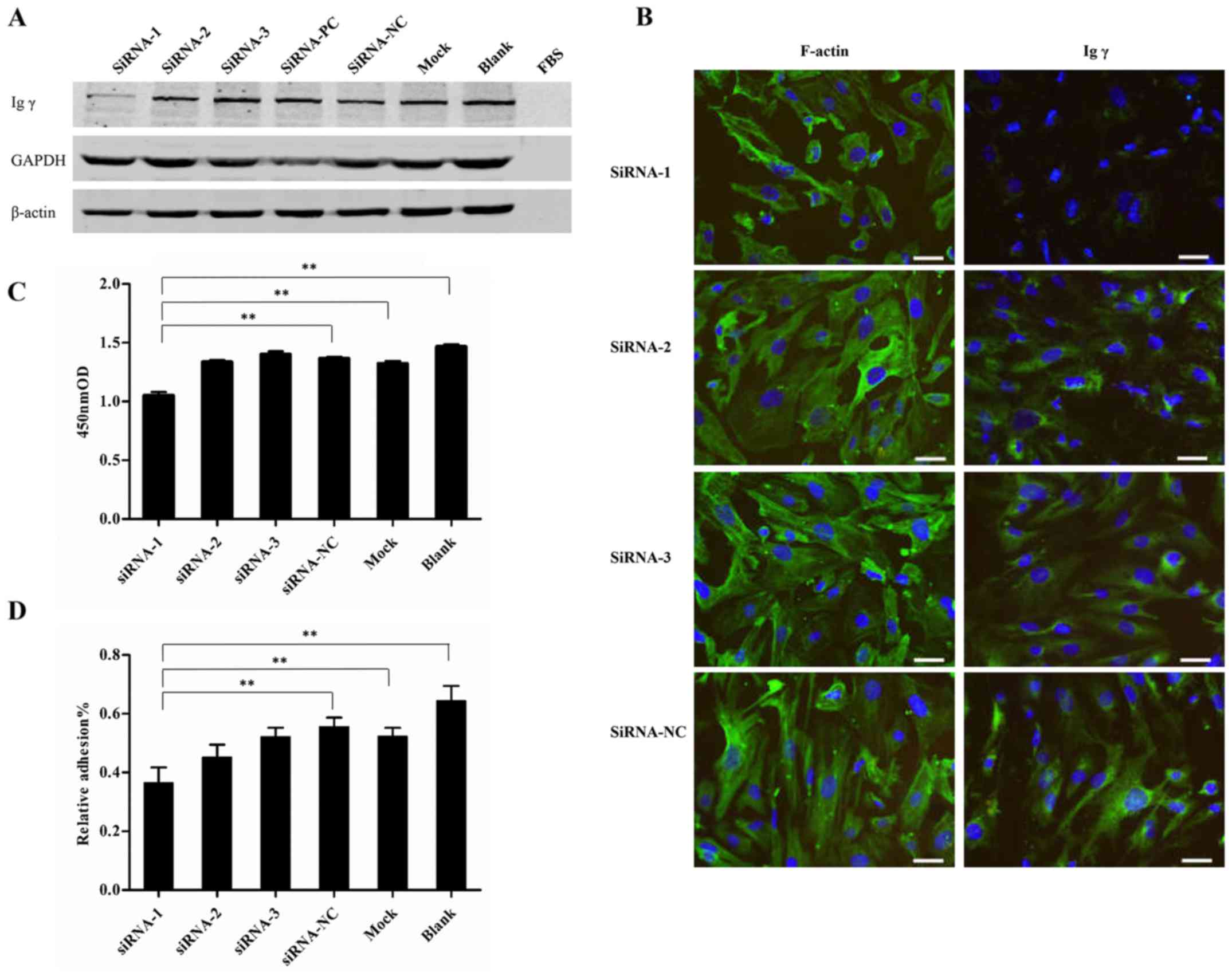|
1
|
Reiser J and Altintas MM: Podocytes.
F1000Research F1000. Faculty Rev. 5:1142016.
|
|
2
|
Wiggins RC: The spectrum of
podocytopathies: A unifying view of glomerular diseases. Kidney
Int. 71:1205–1214. 2007. View Article : Google Scholar : PubMed/NCBI
|
|
3
|
Beck LH Jr and Salant DJ: Membranous
nephropathy: From models to man. J Clin Invest. 124:2307–2314.
2014. View
Article : Google Scholar : PubMed/NCBI
|
|
4
|
Beck LH Jr, Bonegio RGB, Lambeau G, Beck
DM, Powell DW, Cummins TD, Klein JB and Salant DJ: M-type
phospholipase A2 receptor as target antigen in idiopathic
membranous nephropathy. N Engl J Med. 361:11–21. 2009. View Article : Google Scholar : PubMed/NCBI
|
|
5
|
Schlumberger W, Hornig N, Lange S, Probst
C, Komorowski L, Fechner K, Dähnrich C and Stöcker W: Differential
diagnosis of membranous nephropathy with autoantibodies to
phospholipase A2 receptor 1. Autoimmun Rev. 13:108–113. 2014.
View Article : Google Scholar
|
|
6
|
Qiu X, Zhu X, Zhang L, Mao Y, Zhang J, Hao
P, Li G, Lv P, Li Z, Sun X, et al: Human epithelial cancers secrete
immunoglobulin g with unidentified specificity to promote growth
and survival of tumor cells. Cancer Res. 63:6488–6495.
2003.PubMed/NCBI
|
|
7
|
Li M, Feng DY, Ren W, Zheng L, Zheng H,
Tang M and Cao Y: Expression of immunoglobulin kappa light chain
constant region in abnormal human cervical epithelial cells. Int J
Biochem Cell Biol. 36:2250–2257. 2004. View Article : Google Scholar : PubMed/NCBI
|
|
8
|
Babbage G, Ottensmeier CH, Blaydes J,
Stevenson FK and Sahota SS: Immunoglobulin heavy chain locus events
and expression of activation-induced cytidine deaminase in
epithelial breast cancer cell lines. Cancer Res. 66:3996–4000.
2006. View Article : Google Scholar : PubMed/NCBI
|
|
9
|
Chen Z and Gu J: Immunoglobulin G
expression in carcinomas and cancer cell lines. FASEB J.
21:2931–2938. 2007. View Article : Google Scholar : PubMed/NCBI
|
|
10
|
Qiu X, Sun X, He Z, Huang J, Hu F, Chen L,
Lin P, You MJ, Medeiros LJ and Yin CC: Immunoglobulin gamma heavy
chain gene with somatic hypermutation is frequently expressed in
acute myeloid leukemia. Leukemia. 27:92–99. 2013. View Article : Google Scholar
|
|
11
|
Huang J, Sun X, Gong X, He Z, Chen L, Qiu
X and Yin CC: Rearrangement and expression of the immunoglobulin
µ-chain gene in human myeloid cells. Cell Mol Immunol. 11:94–104.
2014. View Article : Google Scholar
|
|
12
|
Wang C, Xia M, Sun X, He Z, Hu F, Chen L,
Bueso-Ramos CE, Qiu X and Yin CC: IGK with conserved IGKV/IGKJ
repertoire is expressed in acute myeloid leukemia and promotes
leukemic cell migration. Oncotarget. 6:39062–39072. 2015.PubMed/NCBI
|
|
13
|
Huang J, Zhang L, Ma T, Zhang P and Qiu X:
Expression of immunoglobulin gene with classical V-(D)-J
rearrangement in mouse testis and epididymis. J Histochem Cytochem.
57:339–349. 2009. View Article : Google Scholar :
|
|
14
|
Yan M, Zhang X, Pu Q, Huang T, Xie Q, Wang
Y, Li J, Wang Y, Gu H, Huang T, et al: Immunoglobulin g expression
in human sperm and possible functional significance. Sci Rep.
6:201662016. View Article : Google Scholar : PubMed/NCBI
|
|
15
|
Huang J, Sun X, Mao Y, Zhu X, Zhang P,
Zhang L, Du J and Qiu X: Expression of immunoglobulin gene with
classical V-(D)-J rearrangement in mouse brain neurons. Int J
Biochem Cell Biol. 40:1604–1615. 2008. View Article : Google Scholar : PubMed/NCBI
|
|
16
|
Niu N, Zhang J, Guo Y, Zhao Y, Korteweg C
and Gu J: Expression and distribution of immunoglobulin G and its
receptors in the human nervous system. Int J Biochem Cell Biol.
43:556–563. 2011. View Article : Google Scholar
|
|
17
|
Zhao Y, Liu Y, Chen Z, Korteweg C and Gu
J: Immunoglobulin g (IgG) expression in human umbilical cord
endothelial cells. J Histochem Cytochem. 59:474–488. 2011.
View Article : Google Scholar : PubMed/NCBI
|
|
18
|
Jiang D, Ge J, Liao Q, Ma J, Liu Y, Huang
J, Wang C, Xu W, Zheng J, Shao W, et al: IgG and IgA with potential
microbial-binding activity are expressed by normal human skin
epidermal cells. Int J Mol Sci. 16:2574–2590. 2015. View Article : Google Scholar : PubMed/NCBI
|
|
19
|
Zheng J, Huang J, Mao Y, Liu S, Sun X, Zhu
X, Ma T, Zhang L, Ji J, Zhang Y, et al: Immunoglobulin gene
transcripts have distinct VHDJH recombination characteristics in
human epithelial cancer cells. J Biol Chem. 284:13610–13619. 2009.
View Article : Google Scholar : PubMed/NCBI
|
|
20
|
Lee G and Ge B: Cancer cell expressions of
immunoglobulin heavy chains with unique carbohydrate-associated
biomarker. Cancer Biomark. 5:177–188. 2009. View Article : Google Scholar : PubMed/NCBI
|
|
21
|
Lee G and Ge B: Inhibition of in vitro
tumor cell growth by RP215 monoclonal antibody and antibodies
raised against its anti-idiotype antibodies. Cancer Immunol
Immunother. 59:1347–1356. 2010. View Article : Google Scholar : PubMed/NCBI
|
|
22
|
Wen YJ, Mancino A, Pashov A, Whitehead T,
Stanley J and Kieber-Emmons T: Antigen binding of human IgG Fabs
mediate ERK-associated proliferation of human breast cancer cells.
DNA Cell Biol. 24:73–84. 2005. View Article : Google Scholar : PubMed/NCBI
|
|
23
|
Wang J, Lin D, Peng H, Huang Y, Huang J
and Gu J: Cancer-derived immunoglobulin G promotes tumor cell
growth and proliferation through inducing production of reactive
oxygen species. Cell Death Dis. 4:e9452013. View Article : Google Scholar : PubMed/NCBI
|
|
24
|
Li M, Zheng H, Duan Z, Liu H, Hu D, Bode
A, Dong Z and Cao Y: Promotion of cell proliferation and inhibition
of ADCC by cancerous immunoglobulin expressed in cancer cell lines.
Cell Mol Immunol. 9:54–61. 2012. View Article : Google Scholar
|
|
25
|
Liu Y, Liu D, Wang C, Liao Q, Huang J,
Jiang D, Shao W, Yin CC, Zhang Y, Lee G, et al: Binding of the
monoclonal antibody RP215 to immunoglobulin G in metastatic lung
adenocarcinomas is correlated with poor prognosis. Histopathology.
67:645–653. 2015. View Article : Google Scholar : PubMed/NCBI
|
|
26
|
Liao Q, Liu W, Liu Y, Wang F, Wang C,
Zhang J, Chu M, Jiang D, Xiao L, Shao W, et al: Aberrant high
expression of immunoglobulin G in epithelial stem/progenitor-like
cells contributes to tumor initiation and metastasis. Oncotarget.
6:40081–40094. 2015. View Article : Google Scholar : PubMed/NCBI
|
|
27
|
Liu H, Zheng H, Duan Z, Hu D, Li M, Liu S,
Li Z, Deng X, Wang Z, Tang M, et al: LMP1-augmented kappa intron
enhancer activity contributes to upregulation expression of Ig
kappa light chain via NF-kappaB and AP-1 pathways in nasopharyngeal
carcinoma cells. Mol Cancer. 8:922009. View Article : Google Scholar : PubMed/NCBI
|
|
28
|
Zhu X, Wu L, Zhang L, Hao P, Zhang S,
Huang J, Zheng J, Liu Y, Li W, Zhang Y, et al: Distinct regulatory
mechanism of immunoglobulin gene transcription in epithelial cancer
cells. Cell Mol Immunol. 7:279–286. 2010. View Article : Google Scholar : PubMed/NCBI
|
|
29
|
Wu L, Liu Y, Zhu X, Zhang L, Chen J, Zhang
H, Hao P, Zhang S, Huang J, Zheng J, et al: The immunoglobulin
heavy chain VH6-1 promoter regulates Ig transcription in non-B
cells. Cancer Cell Int. 14:1142014. View Article : Google Scholar : PubMed/NCBI
|
|
30
|
Saleem MA, O'Hare MJ, Reiser J, Coward RJ,
Inward CD, Farren T, Xing CY, Ni L, Mathieson PW and Mundel P: A
conditionally immortalized human podocyte cell line demonstrating
nephrin and podocin expression. J Am Soc Nephrol. 13:630–638.
2002.PubMed/NCBI
|
|
31
|
Cerutti A, Zan H, Schaffer A, Bergsagel L,
Harindranath N, Max EE and Casali P: CD40 ligand and appropriate
cytokines induce switching to IgG, IgA, and IgE and coordinated
germinal center and plasmacytoid phenotypic differentiation in a
human monoclonal IgM+IgD+ B cell line. J
Immunol. 160:2145–2157. 1998.PubMed/NCBI
|
|
32
|
Lynch S, Kelleher D, McManus R and
O'Farrelly C: RAG1 and RAG2 expression in human intestinal
epithelium: Evidence of extrathymic T cell differentiation. Eur J
Immunol. 25:1143–1147. 1995. View Article : Google Scholar : PubMed/NCBI
|
|
33
|
Revy P, Muto T, Levy Y, Geissmann F,
Plebani A, Sanal O, Catalan N, Forveille M, Dufourcq-Labelouse R,
Gennery A, et al: Activation-induced cytidine deaminase (AID)
deficiency causes the autosomal recessive form of the Hyper-IgM
syndrome (HIGM2). Cell. 102:565–575. 2000. View Article : Google Scholar : PubMed/NCBI
|
|
34
|
Lee G, Huang C, Chow S and Chien C:
Carbohydrate-associated epitope-based anti-cancer drugs and
vaccines. Adv Biosci Biotechnol. 4:18–23. 2013. View Article : Google Scholar
|
|
35
|
Shao W, Zhang C, Liu E, Zhang L, Ma J, Zhu
Z, Gong X, Qin Z and Qiu X: Identification of liver epithelial
cell-derived Ig expression in µ chain-deficient mice. Sci Rep.
6:236692016. View Article : Google Scholar
|
|
36
|
Tonegawa S: Somatic generation of antibody
diversity. Nature. 302:575–581. 1983. View Article : Google Scholar : PubMed/NCBI
|
|
37
|
Glanville J, Zhai W, Berka J, Telman D,
Huerta G, Mehta GR, Ni I, Mei L, Sundar PD, Day GM, et al: Precise
determination of the diversity of a combinatorial antibody library
gives insight into the human immunoglobulin repertoire. Proc Natl
Acad Sci USA. 106:20216–20221. 2009. View Article : Google Scholar : PubMed/NCBI
|
|
38
|
Bassing CH, Swat W and Alt FW: The
mechanism and regulation of chromosomal V(D)J recombination. Cell.
109(Suppl 1): S45–S55. 2002. View Article : Google Scholar : PubMed/NCBI
|
|
39
|
Welsh GI and Saleem MA: The podocyte
cytoskeleton--key to a functioning glomerulus in health and
disease. Nat Rev Nephrol. 8:14–21. 2011. View Article : Google Scholar : PubMed/NCBI
|
|
40
|
Nagata M: Podocyte injury and its
consequences. Kidney Int. 89:1221–1230. 2016. View Article : Google Scholar : PubMed/NCBI
|



